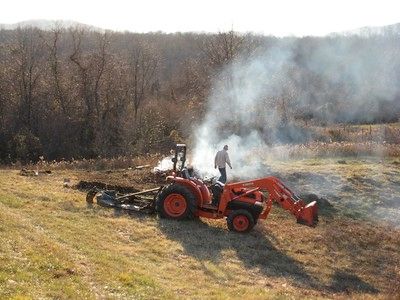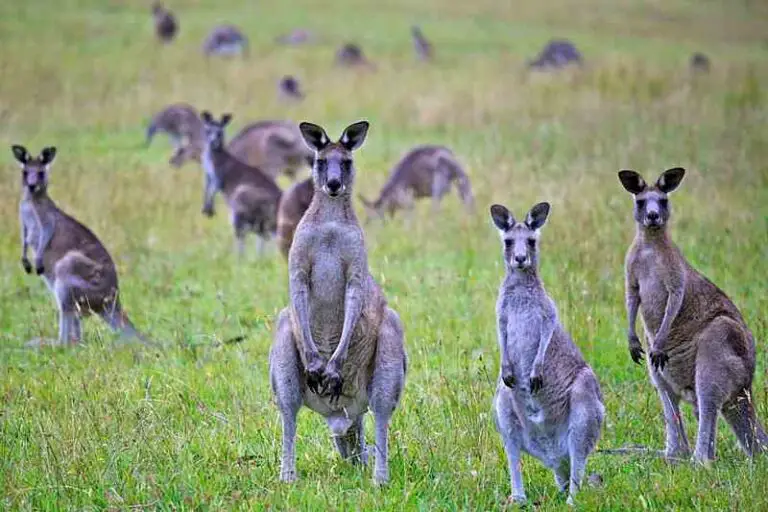Agricultural Pollution Definition, Types, Pollutants and Prevention
Agricultural pollution is the deterioration of soil, water and air by wastes and toxins from agricultural systems and processes. This article discusses agricultural pollution definition, types, pollutants and prevention, as outlined below;
-Agricultural Pollution Definition: 5 Ways to Define Agricultural Pollution
-Types of Agricultural Pollution
-How to Prevent Agricultural Pollution
Agricultural Pollution Definition: 5 Ways to Define Agricultural Pollution
Agricultural pollution refers to environmental degradation that is closely associated with agricultural tools, methods and processes [2].
The above is a most basic definition of agricultural pollution, which highlights the link between this type of pollution and agricultural factors within a given environment.
Further insight on the concept can be gained by considering the causes of agricultural pollution. These causes are listed in the alternative agricultural pollution definition below;
Agricultural pollution is the deteriorative environmental impact of farming practices. Its causes include; excessive chemical application, crop and livestock pathogens, on-farm combustion, untreated wastewater discharge, and agricultural soil erosion.

Like its causes, the effects of agricultural pollution are also important to provide insight to its meaning and ecologic relevance. Below is an alternative agricultural pollution definition that lists some of these effects;
Agricultural pollution is significant loss of soil, water and/or air quality in a given area or ecosystem, due to agricultural practices. Some of its effects are; soil fertility loss, biodiversity/species richness decline, global warming, altered biogeochemical cycling, and eutrophication [1].
Next, some examples of agricultural pollution are included in the definition, to enable the reader gain clarity in visualizing how agricultural pollution occurs;
Agricultural pollution is a process whereby natural environmental quality and safety are reduced by agricultural activities. Examples of agricultural pollution are; water pollution by influx of sediments loosened/exposed by overgrazing and over-tillage, air pollution by toxins from burning agricultural waste and biofuel, eutrophication by excessive fertilizer-accumulation, discharge of pathogenic agricultural effluents, and livestock methane emissions.
Lastly, the agricultural pollution definition is made to include a reference to some potential solutions to agricultural pollution;
Agricultural pollution is a condition, act or process that involves altering the ecologic and biogeochemical equilibrium of the environment through unfavorable agricultural influence. Potential solutions to this environmental issue include; minimal chemical usage, agricultural waste management, renewable energy adoption (like agrivoltaics), soil and water conservation, as well as sustainable farming practices like organic farming and conservation tillage.
Types of Agricultural Pollution
Types of agricultural pollution are; chemical, microbial, air, water and soil pollutions respectively.
1). Agricultural-Chemical Pollution (as one of the Types of Agricultural Pollution)
Agricultural chemical pollution is a type of agricultural pollution that is caused by unsustainable use, and mismanagement of chemical substances for farm uses like soil fertility enhancement, weed management, and pest control.
In spite of the relevance of such chemicals to boost short-term agricultural productivity, using them without regulation can be detrimental to soil, water and air.
Examples of agricultural chemicals that can cause pollution are; fertilizer, herbicide and pesticide.
Excessive application, improper storage and disposal can cause them to have a toxic effect on the environment.
A classic example of agricultural pollution is water and land pollution caused by the leaching and spread of excessive fertilizer from farmlands to adjacent areas [4].
It is often recommended to use less of manmade chemicals in agriculture, and rather adopt principles of sustainable farming such as biodynamic and organic cultivation; that replace fertilizers and pesticides with compost and biological control.
2). Agricultural-Microbial Pollution
Agricultural microbial pollution can be described as the introduction of potentially-harmful microbes into an environmental medium as a result of agricultural activities.
Classes of microorganisms that could multiply in the environment as a result of agriculture are; fungi, virus and bacteria. These organisms may use livestock manure or agricultural waste as their source of nutrients, or may occur as parasites that affect livestock and crops.
Improper management of agricultural waste can cause effluents rich in microbe populations to be released into soil, surface water bodies and groundwater.
On their introduction, microbes are capable of altering the quality of an ambient medium, in a negative manner. An example of this is the decrease in dissolved oxygen (DO) concentration in water bodies due to large populations of bacteria.
Microbial metabolic activities may produce toxins that contaminate soil and water, and the microbes themselves could be pathogenic, so that they cause illness in living organisms with which they come in contact.
The impacts of agricultural microbial pollution extend beyond agriculture itself. They include crop and livestock disease, water contamination, and negative public health-effects.
3). Agricultural-Air Pollution (as one of the Types of Agricultural Pollution)
Agricultural air pollution is a process whereby harmful materials are released into the atmosphere as a result of activities occurring on farms and agro-industrial facilities.
The causes of agricultural air pollution include; gas emissions (greenhouse gases, toxins) from farm-based power plants and biorefineries; particulate matter from crop-waste burning, aerosols and volatile organic compounds (VOCs) from agricultural chemicals, among others.
Pesticides and herbicides may be dispersed by wind as they are being applied on farm pests and weeds respectively. These chemicals often contain toxic constituents that are potentially harmful to both abiotic and biotic aspects of the ecosystem.

4). Agricultural-Water Pollution
Agricultural water pollution is the most common type of agricultural pollution.
It involves the influx of foreign materials into water reserves and aquatic ecosystems, such that the quality of these media is decreased.
Lakes and ponds, rivers, marine water bodies and groundwater, could all be affected by agricultural pollution.
Agricultural activities that pose a threat to the quality of water range from soil-tillage, irrigation and livestock farming to agrochemical usage and fuel (including biofuel) combustion.
Excessive tillage makes agricultural land vulnerable to the agents of soil erosion, which can cause sediments to be transported in runoff, away from agricultural land and into adjacent water bodies, where they may occur in suspension, as pollutants.
Unsustainable irrigation can facilitate leaching and sediment transport, which introduce soil and chemicals into water.
Poor management and disposal of livestock slurry can place water bodies at risk of pollution by pathogens like Escherichia Coli [3].
Accumulation of nutrients from agricultural chemicals and waste, in water bodies leads to eutrophication, which can increase toxicity and reduce quality, of the water.
Addressing agricultural water pollution required a careful effort to protect water bodies from chemicals and effluents of agriculture, and to replace improper practices with safer ones like sustainable irrigation and wastewater treatment.
5). Agricultural-Soil Pollution (as one of the Types of Agricultural Pollution)
Agricultural soil pollution can be described as the acute contamination of soils used in agriculture, by products of agricultural practices; including pathogens, heavy metals, herbicides, pesticides and fertilizers.
In agriculture, soil pollution often occurs as a prelude to other forms of pollution, like water and air pollutions respectively.
It can affect the fertility of soil, and can contaminate crops and (poison) livestock that grow on the affected agricultural land.
Methods like bioremediation and physicochemical remediation can be applied to address this problem.
Regular soil testing, and the enforcement of regulations controlling farm practices, can both mitigate the risk of agricultural soil pollution.
Agricultural Pollutants
Agricultural pollutants include;
1. Nutrients (like phosphorus (P) and nitrogen (N))
2. Heavy metals (like mercury (Hg), cadmium (Cd) and arsenic (As))
3. Persistent Organic Pollutants (POPs) (like chlordane, aldrin, DDT, endrin, mirex and hexachlorobenzene)
4. Sediments
5. Pathogens (like (E. Coli))
The table below summarizes agricultural pollutants in terms of the main categories, their sources, examples, and potential impacts;
Agricultural Pollutant | Source(s) | Examples | Potential Impacts |
Heavy metals | Livestock slurry, pesticides, herbicides | Mercury (Hg), cadmium (Cd), arsenic (As) | Soil and water contamination, fertility loss, poisoning of plants and animals, human health risk |
Persistent Organic Compounds | Pesticides | chlordane, aldrin, DDT, endrin, mirex, hexachlorobenzene, heptachlor, toxapheme | food chain disruption, death of non-target organisms, biodiversity loss, public health risk |
Nutrients | Fertilizer | phosphorus (P), nitrogen (N) | Eutrophication, oxygen depletion, biodiversity loss, groundwater degradation |
Sediments | Over-tilled/overgrazed agricultural land | Mud, sand, silt | Water clogging/clouding, oxygen depletion, contamination |
Pathogens | Livestock slurry, Compost | Escherichia Coli, Cryptosporidium | Waterborne illnesses |
How to Prevent Agricultural Pollution
Ways to prevent agricultural pollution are;
1. Minimal fertilizer usage
2. Biological control of pests and weeds
3. Sustainable waste management
4. Soil conservation and restoration
5. Water conservation
6. Enforcement of regulations
7. Rotational grazing
8. Clean energy adoption on farms
9. Public sensitization on agricultural pollution and its consequences
Conclusion
Agricultural pollution is the decline in quality of soil, water and air as a result of unsustainable agricultural materials, and methods.
Types of agricultural pollution are;
1. Agricultural-Chemical Pollution
2. Agricultural-Microbial Pollution
3. Agricultural-Air Pollution
4. Agricultural-Water Pollution
5. Agricultural-Soil Pollution
Agricultural pollutants include; nutrients, heavy metals, persistent organic pollutants, sediments, and pathogens.
Ways to prevent agricultural pollution are; minimal fertilizer usage, biological control, sustainable waste management, soil conservation/restoration, water conservation, enforcement of regulations, rotational grazing, clean energy adoption, and public sensitization.
References
1). Firbank, L.; Petit, S.; Smart, S. M.; Blain, A.; Fuller, R. J. (2008). "Assessing the Impacts of Agricultural Intensification on Biodiversity: A British Perspective." Philosophical Transactions of The Royal Society B Biological Sciences 363(1492):777-87. Available at: https://doi.org/10.1098/rstb.2007.2183. (Accessed 24 May 2023)
2). Kumar, G.; Afaq, U.; Gupta, B. K. (2020). "Agricultural Pollution: Causes, Hazards and Solutions." Global Environmental Problems, (pp.80 - 84). Available at: https://www.researchgate.net/publication/350580151_Agricultural_Pollution_Causes_Hazards_and_Solutions. (Accessed 24 May 2023).
3). Mcallister, T. A.; Topp, E. (2012). "Role of livestock in microbiological contamination of water: Commonly the blame, but not always the source." Animal Frontiers 2(2):17-27. Available at: https://doi.org/10.2527/af.2012-0039. (Accessed 24 May 2023).
4). Singh, B.; Craswell, E. (2021). "Fertilizers and nitrate pollution of surface and ground water: an increasingly pervasive global problem." SN Applied Sciences 3(4):518. Available at: https://doi.org/10.1007/s42452-021-04521-8. (Accessed 24 May 2023).



